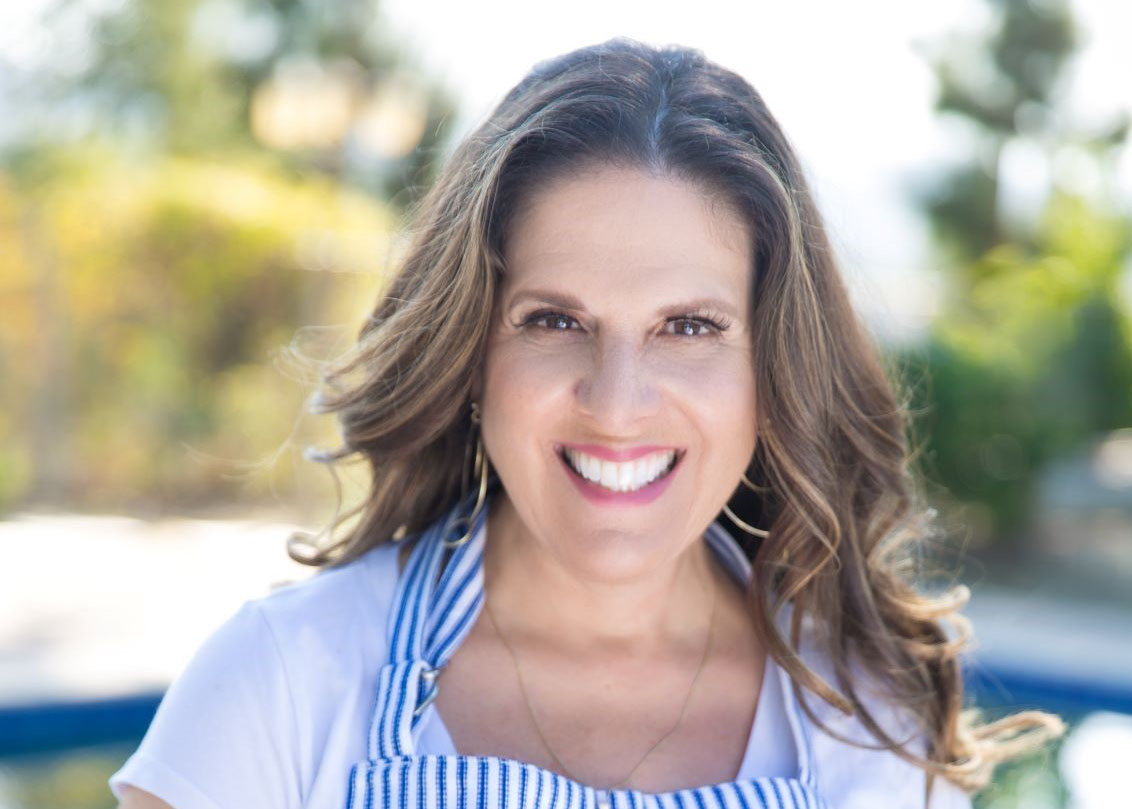
Everyone loves a nice, sweet hamantaschen for Purim. However, there are other festive foods to enjoy.
“We always had fun baking hamantaschen on Purim, but everyone seemed to get more excited about eating the poppy seed cookies,” Norma Zager told the Journal.
A baker and comedian, Zager is one of the judge grannies on Peacock’s “Baking It!”
“When my children were growing up, my brother-in-law’s mother, Grandma Bell, used to make poppy seed cookies on holidays,” she said. “We all looked forward to her cookies. She would bring them in a decorative tin and, when we pried open the top, we knew we were in for a treat.”
Zager’s recipe is as close to what her family remembers.
Bubbe Bell’s Lemon Poppy Seed Cookies
1 ¾ cup all-purpose flour (spooned & leveled)
½ teaspoon baking soda
¼ teaspoon salt
½ cup unsalted butter, softened
¾ cup granulated sugar
1 large egg, room temperature preferred
zest of one lemon (about 1 tablespoon)
1 tablespoon fresh lemon juice
1 teaspoon lemon extract
2 tablespoons of poppy seeds
In a large mixing bowl, mix together the flour, baking soda and salt. Set aside.
In the bowl of a stand mixer fitted with the paddle attachment, or a large mixing bowl using a hand-held mixer, beat the butter and granulated sugar until light and fluffy.
Add in the egg and mix until well combined. Add in the lemon zest, lemon juice and lemon extract, and mix well, scraping down the sides of the bowl as needed.
Slowly add in the dry ingredients and mix until just combined.
Cover tightly and transfer to the refrigerator for at least 30 minutes to chill the cookie dough.
Preheat the oven to 350°F. Line two large baking sheets with parchment paper or silicone baking mats.
Remove the cookie dough from the refrigerator and scoop out two tablespoon sized pieces of cookie dough onto the prepared baking sheets. I prefer to roll the dough into balls and then gently press them down a little.
Bake in batches at 350°F for 10-12 minutes. The cookies should look done on the outside, but still a little soft on the inside. Remove from the oven and cool on the baking sheet for 5 minutes, then transfer to a wire rack to finish cooling.
“The famed hamantaschen is usually a sweet cookie with yummy filling, but, times they are a changin,’ Danny Corsun, founder of Culinary Judaics Academy (CJA), told the Journal.
CJA decided to go savory and create a whole hamantaschen meal.
“CJA has tweaked this classic spinach/pastry dough recipe to feature some seriously comforting, cheesy goodness,” he said. “Enjoy!”
CJA Cheesy Spinach Leek and Artichoke Puff Pastry Hamantaschen
20 puff pastry squares (4 × 4 inches each)
½ tbsp olive oil – for sauteing
2 medium leeks thinly sliced
1 (14 oz) jar artichoke hearts, drained
and chopped
1 (10 oz) bag baby spinach leaves
1 (8 oz) package cream cheese
1½ cups shredded mozzarella cheese
3 green onions, sliced
1 tsp garlic herb powder
Salt and pepper, to taste
1 clove garlic, minced
2 tbsp olive oil – for garlic oil
1 clove garlic, minced – for garlic oil
Sesame Seeds – for topping
Preheat the oven at 400° F.
Heat oil in a large pot over medium-high heat. Add the thinly sliced leeks and cook until soft. Add artichoke pieces and cook for one minute.
Reduce heat to medium, add the spinach and cook until wilted. Mix in cream cheese and mozzarella, and allow them to melt entirely. Fold in the green onions and season with salt and pepper to taste. Remove from heat.
In a small dish, stir together 2 tablespoons olive oil and 1 minced garlic clove. Set aside garlic oil topping.
Cut pastry squares into triangles. Position half of the triangles onto a baking sheet lined with parchment paper.
With the other half of the triangles, cut out a triangular hole in the center, forming a window.
To assemble:
Place a couple of tablespoons of the filling on the base triangle and cover with the “window” triangle.
Use a fork to press down the edges, making sure they are sealed well.
Brush over the top of the puff pastry with the garlic oil and sprinkle with sesame seeds.
Bake for 25 to 30 minutes. Serve warm.
Yields 10 hamantaschen.
Corsun said the story of Purim “gives us an opportunity to take responsibility for each other and the world around us.”
Corsun said the story of Purim “gives us an opportunity to take responsibility for each other and the world around us.”
Queen Esther is a great example.
“My daughter loved to dress as Queen Esther,” Zager said. “I was really always proud to share with my daughter that Queen Esther was a hero and had saved our people. It was truly a pre-feminist holiday.”
Added Corsun, “Esther stepped forward and risked everything.”
While she could have prayed to G-d for a miracle to thwart the evil Haman, instead, she helped make the miracle. If she didn’t, we would likely be telling a different story.
“This Purim, tap into your inner Queen Esther,” Corsun said. “In addition to getting dressed up and eating some Hamantaschen, volunteer your time, donate to a worthy cause or just be there for a friend who needs some support. Get out there and help make the miracle!”
Chag Purim Sameach!
























 More news and opinions than at a Shabbat dinner, right in your inbox.
More news and opinions than at a Shabbat dinner, right in your inbox.